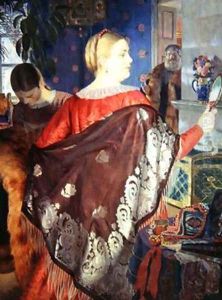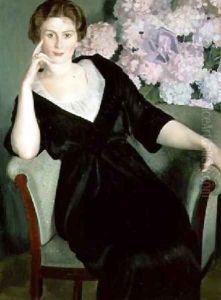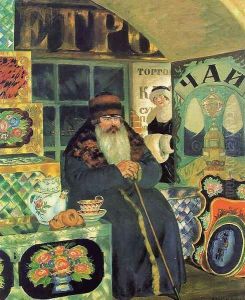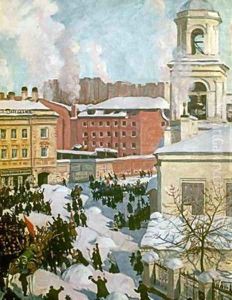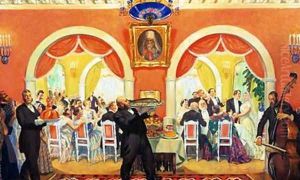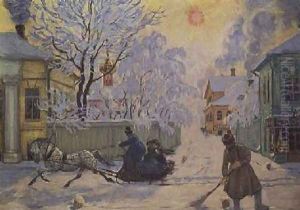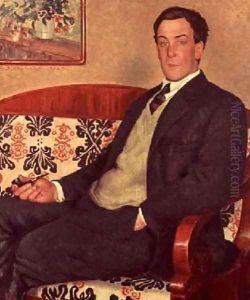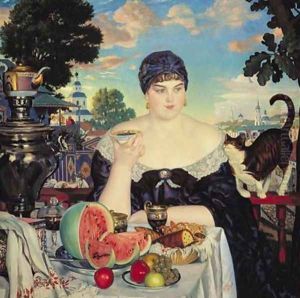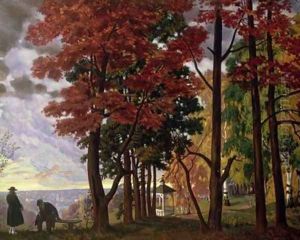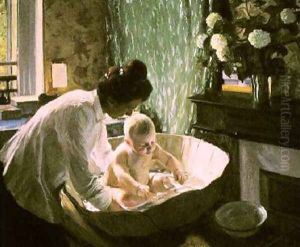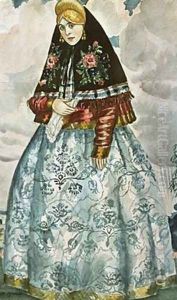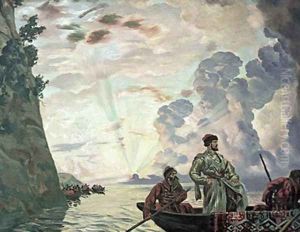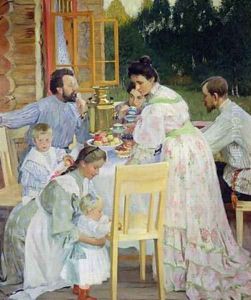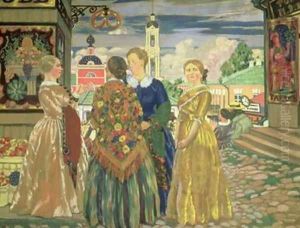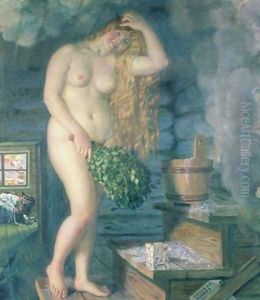Boris Kustodiev Paintings
Boris Kustodiev was a Russian painter and stage designer, born in Astrakhan on March 7, 1878. He is known for his vivid and colorful portrayal of the Russian life, its festivities, and its traditions. Kustodiev displayed artistic talent at an early age and attended the Moscow School of Painting, Sculpture and Architecture before moving on to the Imperial Academy of Arts in Saint Petersburg.
At the Imperial Academy, he studied under Ilya Repin who was a major influence on his work. Kustodiev was not only influenced by his teachers but also by Russian iconography and folk art. After graduating with honors, he traveled to France, Spain, and Austria on a scholarship, which broadened his artistic vision. His works often depicted an idealized version of Russian life, brimming with robust figures and saturated colors that evoke a sense of warmth and festivity.
In addition to painting, Kustodiev was involved in illustration and theater set design which complemented his love for traditional Russian motifs. His illustrations for Maxim Gorky's works are particularly notable. Despite being diagnosed with tuberculosis of the spine in 1907, which later paralyzed him, Kustodiev continued to work from his wheelchair. His disability did not hinder his creativity or productivity; in fact, some of his best works were created during this period.
Kustodiev's paintings also reflect the social changes and political turmoil of his time. The Russian Revolution of 1917 was a significant event that influenced his art. However, rather than focusing on the conflict, Kustodiev chose to depict the lives of the bourgeoisie and the peasants with a sense of nostalgia and a celebration of national identity.
Boris Kustodiev's work is celebrated for its stylistic uniqueness that blends Russian folk art with elements of Art Nouveau and Symbolism. His portrayal of the merchant class, festivities, and the Russian countryside created a unique cultural tapestry that chronicled the spirit of his homeland. Kustodiev passed away on May 28, 1927, in Leningrad, but his works continue to be admired for their rich depiction of Russian culture and history.














